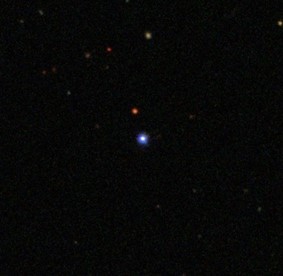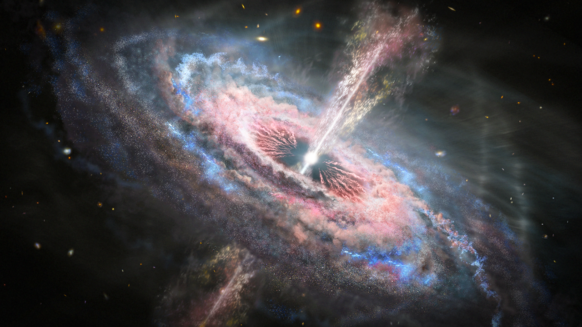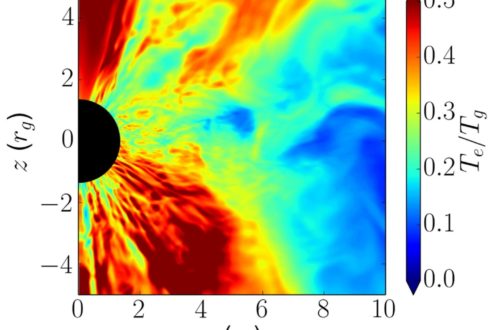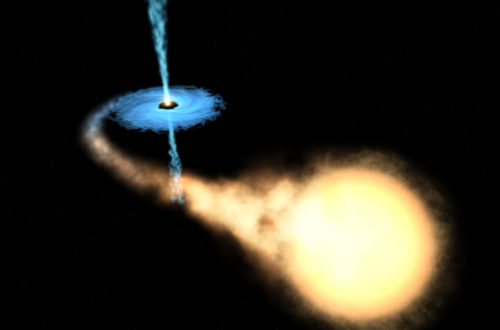Many celestial objects have certain limitations on their physical properties, governed by the laws of nature. For example, if a planet gains enough mass (around 10 times as massive as Jupiter), they become massive enough to fuse deuterium or lithium, effectively categorizing them as a star. A similar case happens for stars, which are, for most of their lives, in a stable equilibrium between the inward gravitational force of the gas and the outward radiation pressure from the energy generated by the nuclear reactions in the core. The luminosity (and by extension the radiation pressure) is highly proportional to its mass, which means that if you continue to add mass to a star, the radiation pressure will eventually become so great that it overcomes the gravitational force holding the star together, causing the outer layers of the star to blow off, removing large portions of the stellar mass and leaving behind the exposed core of the star. This is known as the Eddington mass limit and is a theoretical upper limit of the mass of a star. One of the most massive stars we have ever observed is R136a1, which has a mass of around 210-250 solar masses, and the fact that we have not discovered stars much heavier than this is likely a direct result of the Eddington mass limit. When the heaviest stars end their lives, the result is a neutron star or a black hole, with a neutron star having a mass limit of around 2.10-2.16 solar masses before it collapses into a black hole. This is known as the Tolman-Oppenheimer-Volkoff limit and is the analogous mass limit to the Chandrasekhar mass limit for white dwarfs. As such, objects ranging from the familiar planet to the extremes of white dwarfs and neutron stars all have an upper limit of how massive they can get, which naturally leads us to the very most extreme things in the universe: black holes. How massive are the biggest black holes, and how big can they actually get?
Black holes are categorized into three main groups based on their mass: stellar mass, intermediate mass, and supermassive, with masses ranging approximately from, respectively, 10 to 1000, 1000 to 10 000, and 10 000 to 10 billion solar masses. However, black holes even more massive than 10 billion solar masses have been discovered, leading some astronomers to include the category of ultramassive black holes for the ones that exceed this value. In fact, the most massive black hole ever discovered is called Ton 618, and it has a minimum mass of around 70 billion solar masses.

Ton 618 showing as the bright blue dot in the centre of the image. From the Sloan Digital Sky Survey, Apache Point Observatory, Astrophysical Research Consortium
Ton 618 is an extremely luminous active galactic nuclei (AGN), known as a quasar. It is surrounded by a gaseous accretion disk, which, when falling towards the black hole heats up due to friction and releases large amounts of energy. Ton 618 not only weighs more than all the stars in the milky way combined, it also shines brighter than 140 trillion (that is 140 000 000 000 000) suns, which makes it one of the brightest objects we have ever discovered in the universe. If you replaced the sun with Ton 618, its event horizon would reach out to 1300 AUs (1 AU = astronomical unit is the average distance from the Sun to the Earth), which is more than 30 times larger than our entire solar system if you define the outer boundary at the orbit of Pluto. Ton 618 is located 10 billion light years away from us, which means that we are seeing how this quasar looked over 10 billion years ago, and that light was in fact released less than 3 billion years after birth of the universe. Ton 618 is one of the most massive single objects we have ever discovered, and it is possible that it is the most massive object in the entire universe, as it may have been growing continuously for 10 billion years.

However, even though Ton 618 is the biggest black hole discovered, it is not vastly larger than the other biggest black holes, with the top five having a mass range of approximately 40 to 70 billion solar masses. The most luminous quasars contain a black hole with a mass of a few tens of billions of solar masses, providing observational clues that there is some sort of upper mass limit on ultramassive black holes. However, this is not in line with our current theoretical models of black holes: there is no point at which more mass will cause it to behave like a different object (similar to how planets become stars when reaching a certain mass). Nor will it collapse further into a denser object (there is nothing more dense in the universe than the singularity of a black hole) in analogy to the mass limits of stars and white dwarfs/neutron stars. So why do we not observe more massive black holes? One theory that could explain the observed mass limit proposes that the internal physics of the accretion disk itself limits the growth of the black hole once it reaches a certain mass threshold. As the black hole increases in mass, the amount of gas it accretes from the surrounding disk of matter also increases. To grow a black hole to masses larger than 100 billion solar masses, the gas supply rate is so high that stars will begin to form in the outer region of the disk, limiting the amount of gas that is able to reach the black hole. The small residual fraction of gas that is able to make it down to the black hole is then ejected as powerful jets or winds instead of being consumed by the black hole, effectively suppressing its growth. If this theory is correct, then we are unlikely to ever find much bigger black holes than Ton 618, even though black holes could in theory grow indefinitely in size (assuming no disruptions to its gas consumption). However, there are still many unknowns in the theories of black hole outflows, so whether this theory holds true remains to be seen. There is always the possibility that even bigger black holes are so rare that we simply have not seem them yet.



